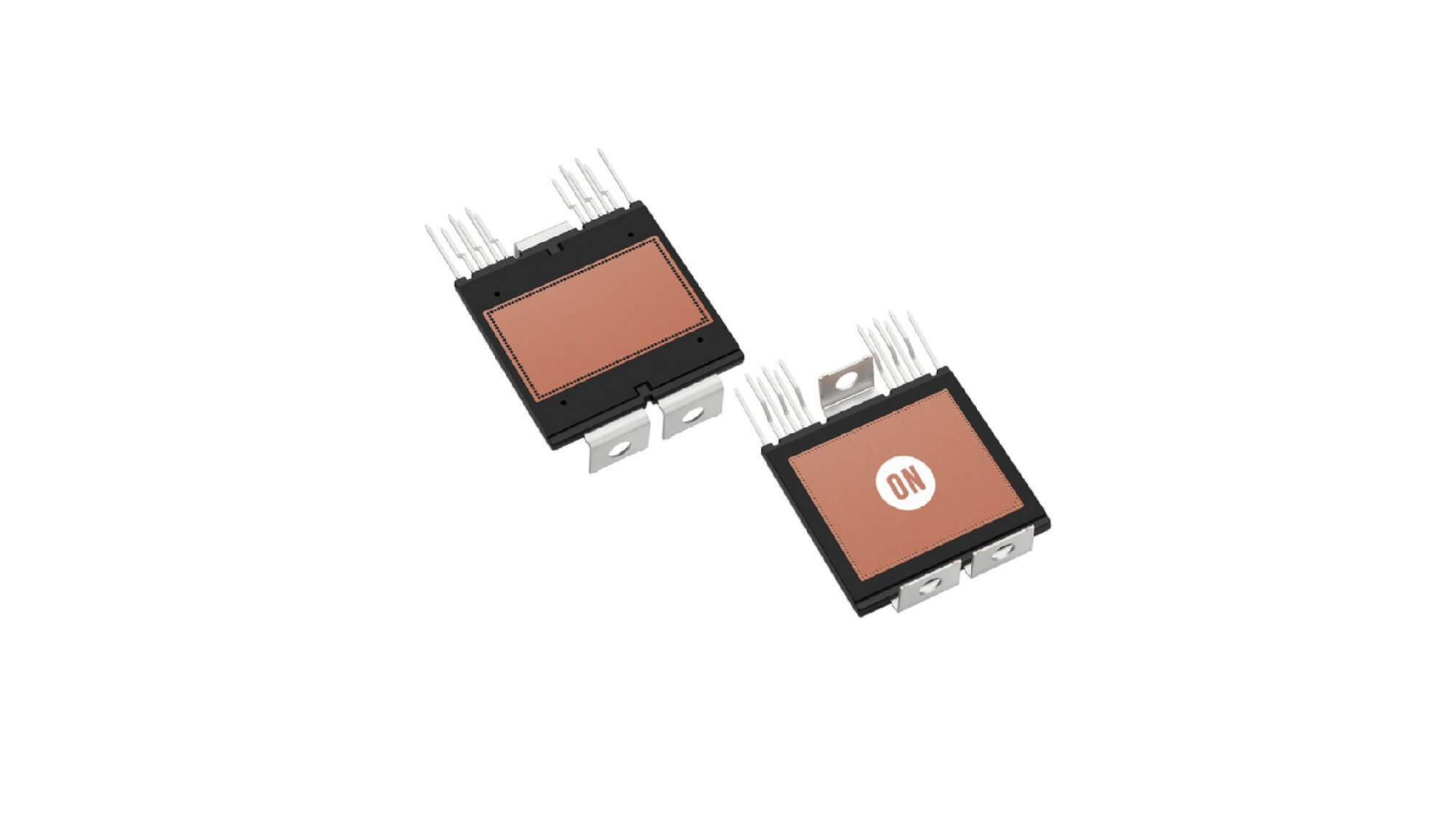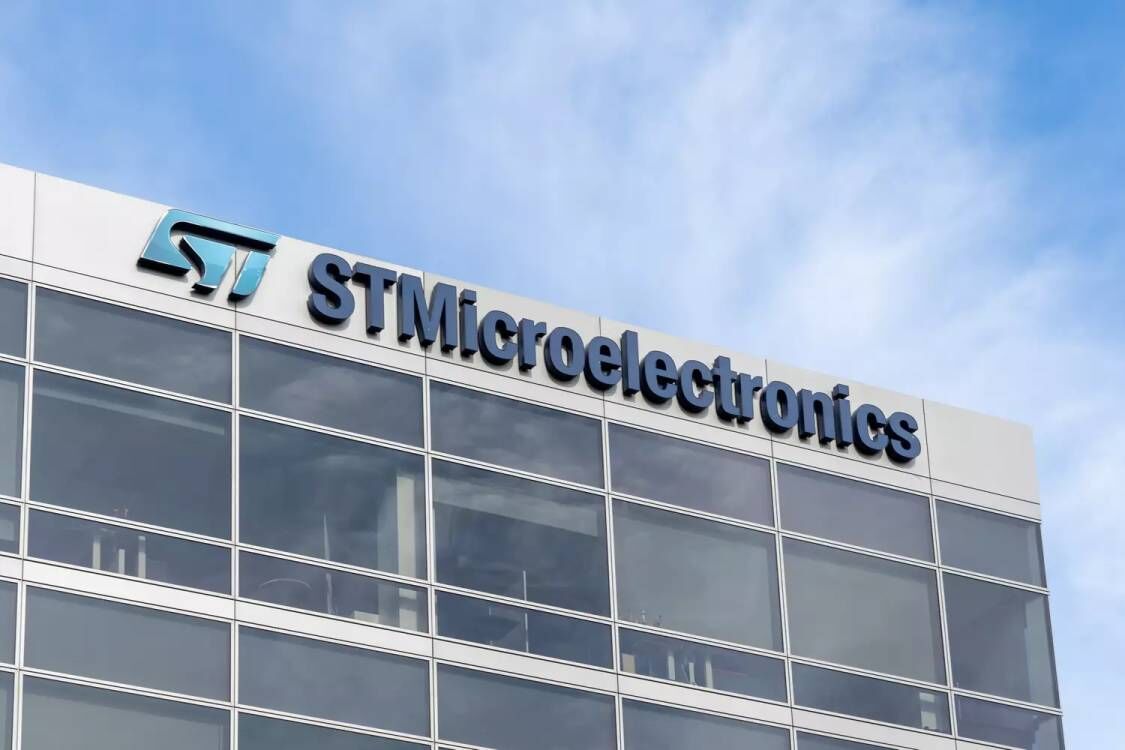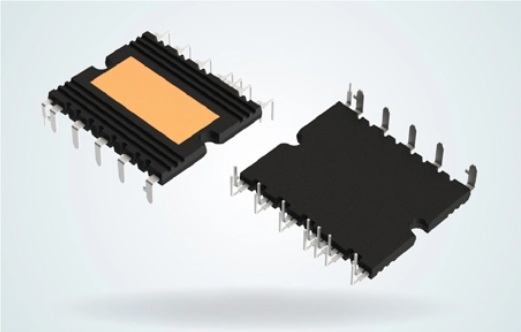ON Semiconductor has released the first two devices from its new VE-Trac™ family of power modules for high voltage automotive traction inverters. These two power integrated module (PIM) devices bring best-in-class electrical and thermal performance while providing scalability and automotive reliability to the rapidly growing market for traction inverters. Future devices in the VE-Trac family will include discrete power devices, isolated gate drivers and expanded module solutions, as well as wide bandgap (WBG) devices that will drive performance and expand the portfolio of products available to automotive systems designers.
The first two devices to be released are ideally suited for use in the main traction inverter of all types of electrically-powered vehicles including battery electric vehicles (BEV), plug-in hybrid electric vehicles (PHEV) and full hybrid vehicles (HEV). With the release of these two devices, ON Semiconductor enables two traction inverter design platforms: VE-Trac Dual and VE-Trac Direct.
VE-Trac Dual will be a collection of Dual Side Cool (DSC) half bridge modules that are stackable and scalable within a compact footprint for traction applications. VE-Trac Dual can be a platform solution for traction inverter applications ranging from 80kW to 300kW with minimum mechanical redesign. The first released VE-Trac Dual device is the NVG800A75L4DSC. The module is rated to 750V at 800A making it double the capacity of currently available competing devices. Market-leading thermal performance is achieved through the utilization of highly-effective dual-sided cooling.
The NVG800A75L4DSC is an AQG-324 qualified module with an embedded smart IGBT that provides a faster reaction time for the integrated over-current and over-temperature protection features and delivers a more robust overall solution. The absence of any wire bonds in the module doubles its rated lifetime. Additional devices within the VE-Trac Dual platform with higher voltages and various current level options will be released over the coming months to allow a wide range of emerging applications to be addressed.
The VE-Trac Direct platform, meanwhile, offers best-in-class performance and benefits, including direct cooling for excellent thermal performance. The first release on this platform is the AQG-324 qualified NVH820S75L4SPB. The device is housed in a six-pack configuration that is widely recognized and adopted by automotive OEMs and systems providers; this will allow multi-sourcing to be achieved with minimal layout changes. Due to become available in multiple power classes, the VE-Trac Direct platform will allow simple and rapid scaling of power for different vehicle platforms and applications.
Both VE-Trac Direct and VE-Trac Dual platforms are able to operate continuously at junction temperatures up to 175ºC, allowing more power to be delivered within the compact footprint of the modular solution.
Recognizing the rapid adoption and growth in all forms of electrically-powered vehicles, ON Semiconductor has invested heavily in its manufacturing capacity and integrated supply chain. This means that the VE-Trac family will be able to address the potential high levels of demand for devices across the broad spectrum of voltages that will be required for automotive traction inverters.
Commenting on the release of the first devices on the VE-Trac Dual and VE-Trac Direct in the VE-Trac family, Asif Jakwani, VP & GM, High Power Division, Power Solutions Group at ON Semiconductor said: “These new highly integrated devices and the VE-Trac program as a whole, demonstrate ON Semiconductor’s commitment to delivering energy efficient innovations within the automotive space that address current challenges and help drive the rapid evolution and adoption of electric powertrains. As more devices and modules using a range of technologies and formats are released to the market, we will continue to be able to address all types of traction inverter and motor applications. Future announcements will include devices with higher and lower voltage capability than the initial two devices.”












All Comments (0)